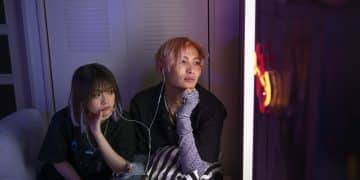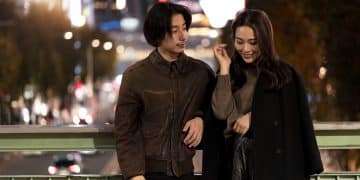Key Cultural Storytelling, Emotional Tone, and Character Arcs Explained

K-Dramas vs Western Shows: Two Storytelling Giants on the Global Stage
When comparing K-Dramas vs Western shows, the key differences go far beyond language or location. Both South Korea and the United States have become entertainment powerhouses, shaping global pop culture in unique ways. K-Dramas captivate audiences with their emotional depth, cultural nuance, and visual storytelling, while Western series dominate with long-running franchises, genre diversity, and bold character arcs.
As streaming platforms like Netflix, Viki, Disney+, and Hulu make these shows more accessible worldwide, the contrasts are more visible than ever. Understanding the key storytelling traditions of Korean and American dramas allows viewers to appreciate not only the entertainment value but also the cultural values and worldviews they represent.
The Cultural Foundations of Storytelling
Confucian Heritage and Korean Storytelling
The key cultural influence in Korean TV comes from Confucianism, which emphasizes harmony, respect for elders, family ties, and collective well-being. These values manifest in narratives that prioritize:
-
Intergenerational respect (grandparents and parents often play pivotal roles in decision-making).
-
Community responsibility (characters consider how actions affect family and neighbors).
-
Emotional restraint (feelings are communicated subtly rather than through dramatic confrontation).
For example, dramas like Reply 1988 or My Mister highlight the strength of community bonds and the quiet dignity of ordinary life.
Western Individualism and Direct Expression
By contrast, American and European dramas reflect Western ideals of individualism and self-expression. Stories often center on:
-
Personal ambition and independence (Breaking Bad, Mad Men).
-
Romantic autonomy and self-discovery (Sex and the City, Friends).
-
Direct confrontation and explicit emotion, where characters openly articulate desires, anger, or affection.
This divergence is a key difference that shapes the very DNA of how each story is told and received.

Episodic Structure: Quality Over Quantity
The Compact Brilliance of K-Dramas
One key strength of K-Dramas is their episodic structure. Usually running 12 to 16 episodes in a single season, each 60–90 minutes, they offer:
-
A clear beginning, middle, and end that feels satisfying and complete.
-
Fewer filler episodes, keeping the story tight and emotionally engaging.
-
High production value focused on concise, powerful narratives.
This is why watching a K-Drama often feels like finishing a beautifully complete novel—compact, satisfying, and deeply immersive.
The Long-Form Storytelling of Western Shows
Western series often span multiple seasons, with 20+ episodes per season (network TV) or 8–12 episodes (streaming). This format has key advantages:
-
Extensive world-building (Game of Thrones, The Walking Dead).
-
Multiple character arcs evolving across years (Grey’s Anatomy, NCIS).
-
Franchise potential, spawning spin-offs, prequels, and sequels.
…but it can also lead to pacing problems and filler episodes.
Emotional Tone in K-Dramas vs Western Shows
The Subtle Power of K-Dramas
A key hallmark of K-Dramas is emotional subtlety. Instead of explosive declarations, viewers are treated to:
-
Lingering glances that speak volumes.
-
Small acts of kindness (sharing food, holding an umbrella, bandaging a wound).
-
Slow-burn romances, where love grows through everyday interactions.
For instance, in Crash Landing on You, the romantic tension builds not through dramatic kisses but through quiet, meaningful exchanges.
The Boldness of Western Shows
Western shows lean into key emotional intensity:
-
Love is confessed openly and quickly.
-
Conflict escalates through heated arguments or betrayals.
-
High-stakes twists and shocking reveals drive suspense.
This creates immediacy but sometimes sacrifices the layered buildup that defines K-Dramas.
Character Development and Arcs

K-Dramas: Growth Through Humility and Reflection
In K-Dramas, growth often comes through key cultural values such as family duty, societal pressure, and perseverance. Characters rarely grow by rejecting their environment outright; instead, they evolve by reflecting inwardly, reconciling personal dreams with external expectations, and demonstrating quiet resilience. This kind of growth reflects Korea’s cultural emphasis on harmony, humility, and endurance in the face of adversity.
-
Self-reflection and sacrifice: In It’s Okay to Not Be Okay, the protagonists confront emotional trauma and past wounds, finding healing through empathy, patience, and sacrifice. Growth is depicted as a deeply personal but communal process.
-
Balancing personal dreams with family obligations: Start-Up explores the challenges of pursuing innovation while respecting family bonds and traditions. The story underscores that ambition is meaningful only when balanced with relationships and moral grounding.
-
Overcoming hardship with resilience: In Navillera, an elderly man and a young dancer inspire each other to pursue dreams despite obstacles. Here, resilience becomes a key narrative force, teaching viewers that perseverance transcends age or circumstance.
The underlying message in K-Dramas is that true strength lies not in rebellion but in patience, kindness, and the courage to endure while staying connected to one’s community and values.
Western Shows: Self-Driven Agency
Western protagonists, by contrast, are often defined by key themes of independence and agency. Their arcs tend to emphasize self-actualization, ambition, and bold decisions that shape destiny—sometimes in destructive ways. Growth is frequently tied to the willingness to break norms, take risks, and assert control over one’s path.
-
Moral descent as transformation: In Breaking Bad, Walter White evolves from a meek chemistry teacher into a ruthless drug kingpin. His growth is driven by ambition and independence, but it comes at a catastrophic personal and moral cost.
-
Professional and personal autonomy: In Grey’s Anatomy, Meredith Grey navigates grief, love, and ambition while building her identity as a world-class surgeon. Her arc is marked by decisive choices that prioritize self-discovery and empowerment.
-
Individual reinvention: In Mad Men, Don Draper constantly reinvents himself, embodying the Western ideal of freedom but also exposing the fragility of an identity built on secrets and personal ambition.
The key distinction here is that Western shows often celebrate bold action, even if it leads to moral ambiguity or chaos, while K-Dramas frame growth as a journey of humility, responsibility, and collective harmony.
ows: Self-Driven Agency
Western protagonists embody key themes of independence, with arcs defined by bold choices and ambition. Characters like Walter White (Breaking Bad) or Meredith Grey (Grey’s Anatomy) evolve through self-determination, often at personal cost.
Production Aesthetics: Visuals, Sound, and Atmosphere
One of the key aesthetic contrasts between K-Dramas and Western shows lies in how stories are presented and experienced.
-
K-Dramas: Korean dramas often resemble cinematic films, with lavish cinematography, symbolic visuals, and carefully curated color palettes that heighten emotion. Scenic cityscapes, seasonal backdrops, and meaningful props (like umbrellas, rings, or even a simple meal) carry symbolic weight. Original soundtracks (OSTs) are another defining element—ballads from Goblin or Descendants of the Sun became cultural phenomena in their own right, extending the emotional resonance of the series long after it ended. The music is not just background noise; it’s a key narrative tool that guides mood, highlights pivotal moments, and strengthens character bonds.
-
Western Shows: American and European series, by contrast, lean into either gritty realism or large-scale CGI depending on genre. Breaking Bad uses desert landscapes, sharp contrasts, and color symbolism to reinforce Walter White’s moral descent, while Stranger Things builds its world with special effects and 1980s nostalgia. Music in Western shows tends to act as a key mood enhancer rather than a central storytelling device, with iconic needle-drops (like The Sopranos’ closing song choices or Stranger Things’ use of “Running Up That Hill”) amplifying impact but not carrying the same ongoing narrative weight as K-Drama OSTs.
In short, while both traditions care deeply about aesthetics, K-Dramas turn visuals and sound into key emotional anchors, whereas Western shows use them as atmospheric complements to plot and genre.
Gender Dynamics and Representation
Another key distinction between K-Dramas and Western shows lies in how gender roles and relationships are represented on screen.
-
K-Dramas: Korean dramas tend to emphasize emotional intimacy over physicality, creating romantic arcs that feel tender and carefully paced. Female leads are often portrayed as ambitious, intelligent, and resilient—yet they also navigate societal expectations around family duty, work-life balance, and patriarchal traditions. For example, in When the Camellia Blooms, the heroine struggles against social prejudice as a single mother while still finding love and community acceptance. K-Dramas frequently highlight key moments of quiet empowerment, where characters grow not by shouting louder but by persevering with dignity and kindness.
-
Western Shows: In contrast, Western television often portrays women through the lens of independence and assertiveness, reflecting cultural values of self-expression and autonomy. Female characters like Meredith Grey in Grey’s Anatomy or Olivia Pope in Scandal are unapologetically ambitious, vocal about their desires, and unafraid of confrontation. Romantic relationships are often depicted as key arenas of choice and independence, where characters openly negotiate love, career, and identity without deferring to tradition. This approach resonates strongly with Western ideals of personal freedom and empowerment.
Together, these portrayals highlight a key cultural divergence: K-Dramas frame strength in perseverance and subtle resilience, while Western shows celebrate boldness, independence, and outspoken individuality.
Fan Culture: Online Communities and Global Conversations

A key factor in the rise of both K-Dramas and Western shows is the passion of their fan communities, which amplify storytelling beyond the screen.
-
K-Dramas: Fans of Korean dramas thrive in digital spaces, where social media becomes a global hub for connection. TikTok edits, YouTube OST covers, and fan reaction videos allow viewers to relive their favorite moments. Twitter hashtags often trend worldwide during live broadcasts, creating an international viewing party. A key synergy also exists between K-Dramas and K-Pop—actors double as idols, and idol fanbases often cross over into drama fandoms. This interconnected culture makes K-Dramas not just a genre, but part of Korea’s global cultural export.
-
Western Shows: Western series foster fan culture in a different way, often through conventions like Comic-Con, fanfiction archives, and Reddit debates. Shows like Game of Thrones, The Walking Dead, and Marvel’s TV universe inspired sprawling theories, character debates, and even academic discussions. A key hallmark here is the focus on lore and world-building, with fans digging into every Easter egg or narrative twist.
Both fandoms are powerful, but where K-Drama fans emphasize emotional connection and couple “shipping,” Western fans often thrive on expansive universes and analytical breakdowns.
Streaming Models: Weekly Drops vs Full Seasons
Another key difference lies in how K-Dramas and Western shows are released and consumed, which directly shapes audience engagement.
-
K-Dramas: Traditionally, Korean dramas air two episodes per week, encouraging fans to discuss and speculate between releases. This model fosters anticipation and creates a steady rhythm of engagement. On global platforms like Netflix, some K-Dramas drop all at once, but the traditional weekly format remains key to maintaining cultural conversation in Korea itself.
-
Western Shows: The binge model popularized by Netflix reshaped viewing habits in the West. Series like Stranger Things and House of Cards were designed for marathon consumption, allowing viewers to devour entire seasons in days. However, platforms like Disney+ (The Mandalorian) and HBO (House of the Dragon) returned to weekly drops, realizing this format sustains hype and conversation for months.
The key takeaway: K-Dramas lean toward structured anticipation, while Western shows toggle between binge and weekly models to balance hype with long-term fan loyalty.
Cross-Pollination: A Blurring of Borders
Perhaps the most exciting key development in modern television is the blending of styles. As streaming platforms globalize content, K-Dramas and Western shows increasingly borrow from one another.
-
K-Dramas: Once known only for single-season arcs, Korean productions are experimenting with multi-season narratives (Kingdom, Sweet Home) and bigger CGI budgets to compete with Western blockbusters. This evolution shows how Korean storytelling is adapting while still retaining its key emotional depth.
-
Western Shows: In turn, Western productions are tightening story arcs, reducing filler, and placing greater emphasis on character-driven intimacy—borrowing heavily from the key strengths of K-Drama storytelling. Netflix’s XO, Kitty, a spinoff of To All the Boys I’ve Loved Before, blends American teen-drama tropes with Korean cultural elements, creating a true hybrid.
This cross-pollination ensures that global audiences now expect thekey best of both worlds
s—the emotional resonance of Korean storytelling paired with the scale and variety of Western production.
Shared Themes, Different Delivery
Despite the many stylistic differences, a key similarity between K-Dramas and Western shows is that both explore universal human themes. At their core, they tell stories about love, ambition, family, and identity—but the way these themes are expressed is where the contrast becomes most vivid.
-
Love and Relationships: In K-Dramas like Goblin or Crash Landing on You, love is often portrayed as destiny, unfolding slowly through tender gestures, fate-driven encounters, and subtle intimacy. In Western shows such as Friends or The Office, romance is treated with humor, banter, and more direct expressions of attraction. The key difference is that Korean storytelling builds emotional payoff through anticipation, while Western comedies and dramas favor immediacy and clarity.
-
Family and Sacrifice: K-Dramas such as Reply 1988 highlight the importance of community, intergenerational bonds, and the sacrifices made for loved ones. By contrast, Western shows like This Is Us focus on individual struggles within the family unit, using flashbacks and layered narratives to explore personal growth. Both highlight that family is a key anchor in human life, but they frame sacrifice differently—collective versus individual.
-
Ambition and Identity: In K-Dramas like Vincenzo or Start-Up, ambition is tied to social expectations, morality, and the balance between personal dreams and responsibility. In Western shows like Breaking Bad or Mad Men, ambition is depicted through individual transformation—often with darker consequences. The key takeaway is that Korean dramas portray ambition as something tempered by harmony, while Western series present it as a force of disruption and reinvention.
Ultimately, the key distinction in delivery is that K-Dramas lean into aesthetics, music, and emotional intimacy to build atmosphere, while Western shows rely on pacing, plot twists, and external conflict to keep audiences engaged. Both styles resonate because they reflect not just entertainment choices but also deeper cultural worldviews.
Conclusion: Choosing Your Key Storytelling Flavor
Understanding the key differences between Korean and American dramas is about more than TV preferences—it’s about appreciating cultural diversity in storytelling.
-
If you crave slow-burn, emotionally nuanced journeys, K-Dramas deliver beauty, subtlety, and cultural depth.
-
If you prefer fast-paced, high-stakes storytelling, Western shows offer adrenaline, intensity, and long-term investment.
Both formats enrich the global entertainment landscape. Together, they ensure there’s always a story—whether intimate or epic—that speaks to the human condition in its many forms.
It might be a bias for us here at Dorama Drama but we agree with Floriesha on the following video about her reasons to like K-dramas better than American dramas.





